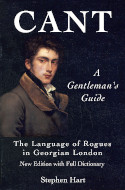SPRING GARDEN TAVERNS
Spring Garden is named from its water-spring or fountain, set playing by the spectator treading upon its hidden machinery—an eccentricity of the Elizabethan garden. Spring Garden, by a patent which is extant, in 1630 was made a bowling-green by command of Charles I. "There was kept in it an ordinary of six shillings a meal (when the king's proclamation allows but two elsewhere); continual bibbing and drinking wine all day under the trees; two or three quarrels every week. It was grown scandalous and insufferable; besides, my Lord Digby being reprehended for striking in the king's garden, he said he took it for a common bowling-place, where all paid money for their coming in."—Mr. Garrard to Lord Strafford.
In 1634 Spring Garden was put down by the King's command, and ordered to be hereafter no common bowling-place. This led to the opening of "a New Spring Garden" (Shaver's Hall), by a gentleman-barber, a servant of the lord chamberlain's. The old garden was, however, re-opened; for 13th June, 1649, says Evelyn, "I treated divers ladies of my relations in Spring Gardens;" but 10th May, 1654, he records that Cromwell and his partisans had shut up and seized on Spring Gardens, "wch till now had been ye usual rendezvous for the ladys and gallants at this season."
Spring Garden was, however, once more re-opened; for, in A Character of England, 1659, it is described as "The inclosure not disagreeable, for the solemnness of the grove, the warbling of the birds, and as it opens into the spacious walks at St. James's.... It is usual to find some of the young company here till midnight; and the thickets of the garden seem to be contrived to all advantages of gallantry, after they have refreshed with the collation, which is here seldom omitted, at a certain cabaret in the middle of this paradise, where the forbidden fruits are certain trifling tarts, neats' tongues, salacious meats, and bad Rhenish."
"The New Spring Garden" at Lambeth (afterwards Vauxhall) was flourishing in 1661-3; when the ground at Charing Cross was built upon, as "Inner Spring Garden" and "Outer Spring Garden." Buckingham-court is named from the Duke of Buckingham, one of the rakish frequenters of the Garden; and upon the site of Drummond's banking-house was "Locket's Ordinary, a house of entertainment much frequented by gentry," and a relic of the Spring Garden gaiety:
"For Locket's stands where gardens once did spring."
Dr. King's Art of Cookery, 1709.
Here the witty and beautiful dramatist, Mrs. Centlivre, died, December 1, 1723, at the house of her third husband, Joseph Centlivre, "Yeoman of the Mouth" (head cook) "to Queen Anne."[40] In her Prologue to Love's Contrivances, 1703, we have
"At Locket's, Brown's, and at Pontack's enquire
What modish kickshaws the nice beaux desire,
What famed ragouts, what new invented sallad,
Has best pretensions to regain the palate."
Locket's was named from its first landlord:[41] its fame declined in the reign of Queen Anne, and expired early in the next reign.
[40] Curiosities of London, pp. 678, 679.
[41] Edward Locket, in 1693, took the Bowling-green House, on Putney Heath, where all gentlemen might be entertained. In a house built on the site of the above, died, Jan. 23, 1806, the Rt. Hon. William Pitt.
John Timbs
Club Life of London Vol. II
London, 1866

